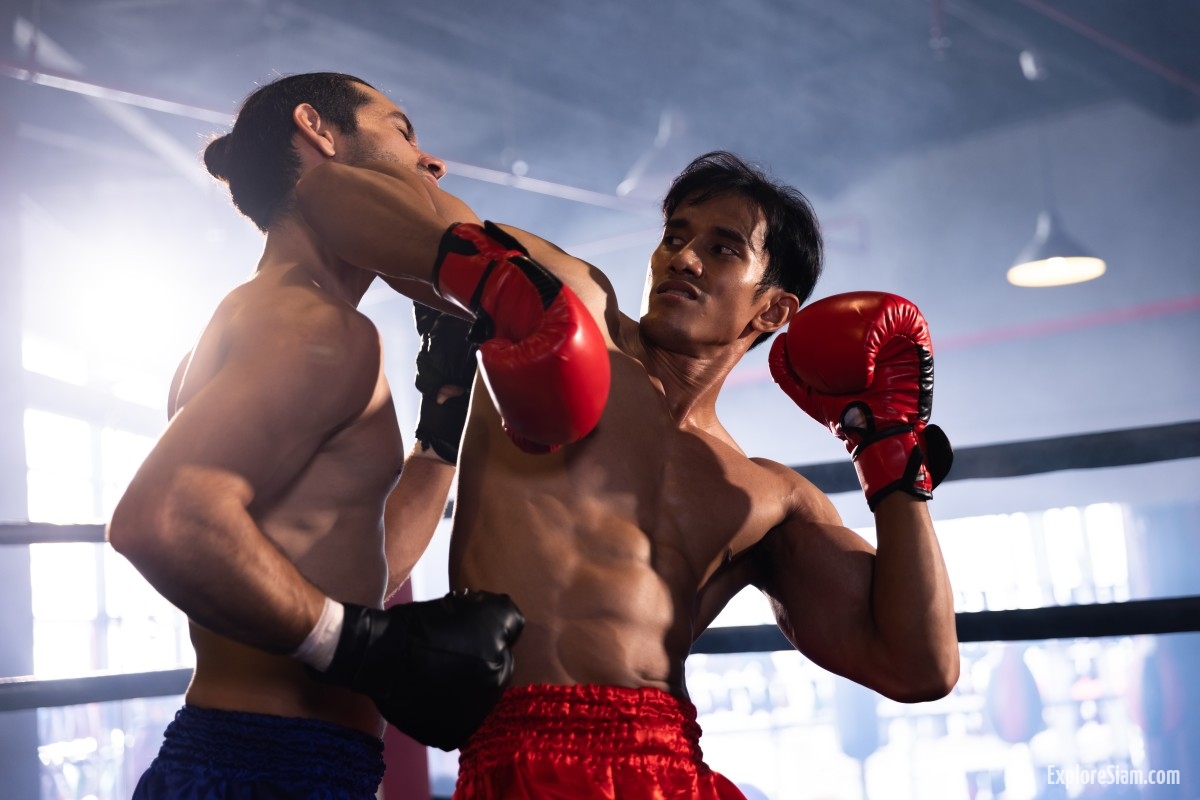Thai Boxing, or Muay Thai, is a martial art steeped in the rich heritage and culture of Thailand. Known as the “Art of Eight Limbs”, Muay Thai utilizes punches, kicks, elbows, and knee strikes, making it one of the most comprehensive and dynamic fighting styles in the world. This article explores the origins, rules, development, evolution, and equipment of this ancient martial tradition.
Origins of Muay Thai
The history of Muay Thai can be traced back to the ancient martial art of Muay Boran, which was practiced by Thai warriors as a means of self-defense and military training. Muay Boran, meaning “ancient boxing”, was an integral part of Thai culture and was used in hand-to-hand combat during warfare. Over time, Muay Boran evolved into Muay Thai, which became a popular sport and a key component of Thai identity.
Muay Thai’s exact origins are difficult to pinpoint due to the loss of historical records during various wars and invasions. However, it is believed that the art developed during the Sukhothai Kingdom in the 13th century. Thai warriors would train in Muay Boran to defend their homeland, often engaging in combat with neighboring kingdoms.
As Thailand’s borders expanded and contracted through various conflicts, Muay Thai evolved to incorporate techniques and influences from other martial arts. By the time of the Ayutthaya Kingdom in the 14th century, Muay Thai had become a formalized discipline with a strong cultural significance. It was during this era that Muay Thai gained royal patronage and became a staple of military training.
Rules of Muay Thai
Muay Thai matches are governed by a set of rules that ensure the safety of the fighters and maintain the integrity of the sport. Here are some of the key rules:
- Rounds and Timing: A professional Muay Thai bout typically consists of five three-minute rounds with a two-minute rest period between each round. Amateur matches may have fewer rounds or shorter durations.
- Scoring System: Points are awarded for clean strikes using punches, kicks, knees, and elbows. Additional points are given for effective grappling and clinching techniques. Judges also consider factors such as aggression, defense, and ring control.
- Legal Strikes: Fighters can use their fists, feet, shins, elbows, and knees to strike their opponent. Throws and sweeps are also permitted, but joint locks and submissions are not allowed.
- Clinching: Clinching is a vital aspect of Muay Thai, where fighters engage in close-range combat to land knee strikes and control their opponent. Effective clinching can neutralize an opponent’s attacks and create opportunities for strikes.
- Protective Gear: Fighters must wear gloves, mouthguards, groin protectors, and, in some cases, shin guards and headgear. This equipment is designed to minimize the risk of injury while allowing fighters to compete at their best.
Muay Thai referees play a crucial role in enforcing these rules and ensuring the safety of the fighters. They have the authority to stop a match if a fighter is deemed unable to continue or if the bout becomes too one-sided.
Development and Evolution
Muay Thai has undergone significant changes since its inception. Originally practiced for military purposes, it transitioned into a sport during the reign of King Prachao Sua in the late 17th century. Known as the “Tiger King”, Prachao Sua encouraged the practice of Muay Thai and even participated in matches himself, helping to popularize the sport among the Thai people.
In the early 20th century, Muay Thai began to adopt Western boxing rules and equipment, such as gloves and a standardized ring. This period saw the establishment of official stadiums, such as Rajadamnern and Lumpinee Stadiums, which became the heart of professional Muay Thai in Thailand. These venues provided a platform for fighters to showcase their skills and for the sport to gain a wider audience.
The introduction of weight classes and standardized training methods further professionalized Muay Thai. Fighters began to specialize in particular techniques and strategies, leading to a more diverse and competitive sport. Muay Thai camps, or gyms, emerged as centers of training and development, producing some of the most skilled fighters in the world.
The sport continued to evolve as it gained international recognition. In the late 20th and early 21st centuries, Muay Thai was introduced to the global stage, attracting practitioners from around the world. International organizations and federations, such as the World Muay Thai Council (WMC) and the International Federation of Muaythai Associations (IFMA), were established to promote and regulate the sport.
Muay Thai’s popularity surged with the advent of mixed martial arts (MMA) and the Ultimate Fighting Championship (UFC). Many MMA fighters trained in Muay Thai to enhance their striking skills, further elevating the sport’s profile. Today, Muay Thai is practiced by millions of people worldwide, from professional fighters to fitness enthusiasts.

Equipment and Gear
Muay Thai fighters rely on specific equipment to protect themselves and enhance their performance. The essential gear includes:
- Gloves: Muay Thai gloves are similar to boxing gloves but are designed to allow for the flexibility needed for clinching and grappling. They come in various weights, typically ranging from 8 to 16 ounces, depending on the fighter’s preference and the nature of the training or competition.
- Hand Wraps: These provide additional support and protection for the hands and wrists. Hand wraps help to prevent injuries by stabilizing the bones and tendons in the hands, reducing the risk of fractures and sprains.
- Mouthguard: A crucial piece of protective gear to safeguard the teeth and gums. Mouthguards also help to absorb shock and reduce the risk of concussions from strikes to the jaw.
- Groin Protector: Protects against low blows and accidental strikes. Male fighters typically wear a steel or plastic cup, while female fighters use a padded protector.
- Shin Guards: While not always used in professional bouts, shin guards are essential for training to protect the shins from injury. They come in various designs, including padded sleeves and hard-shell guards.
- Ankle Supports: Provide stability and support for the ankles during intense movements and strikes. Ankle supports can help to prevent sprains and provide additional protection during training.
- Shorts: Muay Thai shorts are designed to allow maximum mobility and comfort during fights. They are typically made from lightweight, durable materials and feature a wide waistband for a secure fit.
In addition to these essential items, fighters may use other protective gear such as elbow pads, knee pads, and headgear during training to reduce the risk of injury. The choice of equipment can vary based on the fighter’s preferences and the specific requirements of their training regimen.
Cultural Significance
Muay Thai is not just a sport but a cultural phenomenon deeply rooted in Thai society. It embodies the values of respect, discipline, and perseverance. Fighters engage in a traditional Wai Khru Ram Muay dance before each match, paying homage to their teachers, ancestors, and the sport itself. This ritual underscores the spiritual and cultural aspects of Muay Thai, distinguishing it from other martial arts.
The Wai Khru Ram Muay is a deeply symbolic ceremony that reflects the fighter’s gratitude and respect for their mentors and the traditions of Muay Thai. It is often accompanied by traditional Thai music, played on instruments such as the Pi (a type of oboe) and the Klong Khaek (a type of drum). The dance is unique to each fighter, with movements that convey their personal style and connection to their lineage.
Muay Thai is also an important part of Thai festivals and celebrations. Major events, such as the annual King’s Cup and the Queen’s Cup tournaments, draw thousands of spectators and showcase the best fighters in the world. These tournaments are not only sporting events but also cultural celebrations that highlight the rich heritage of Muay Thai.
In rural areas, Muay Thai remains a vital part of community life. Many young boys and girls train in local gyms, hoping to achieve success in the sport and improve their families’ livelihoods. For many, Muay Thai offers a path to a better future, both economically and personally.
Thai Boxing, or Muay Thai, is a testament to Thailand’s rich martial traditions and cultural heritage. Its evolution from an ancient form of combat to a modern sport celebrated worldwide highlights its enduring appeal and significance. Whether practiced for self-defense, sport, or fitness, Muay Thai continues to captivate and inspire people globally, preserving the legacy of Thailand’s martial arts for future generations. As Muay Thai continues to grow and adapt, it remains a powerful symbol of Thai culture and a beacon of excellence in the world of martial arts.






1 thought on “Thai Boxing: The Heritage of Thailand’s Martial Traditions”